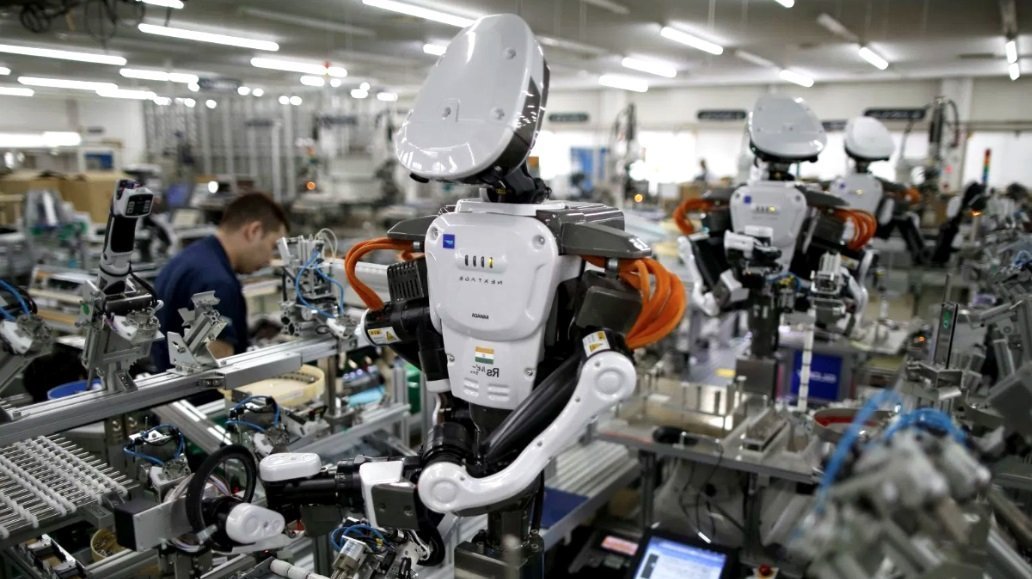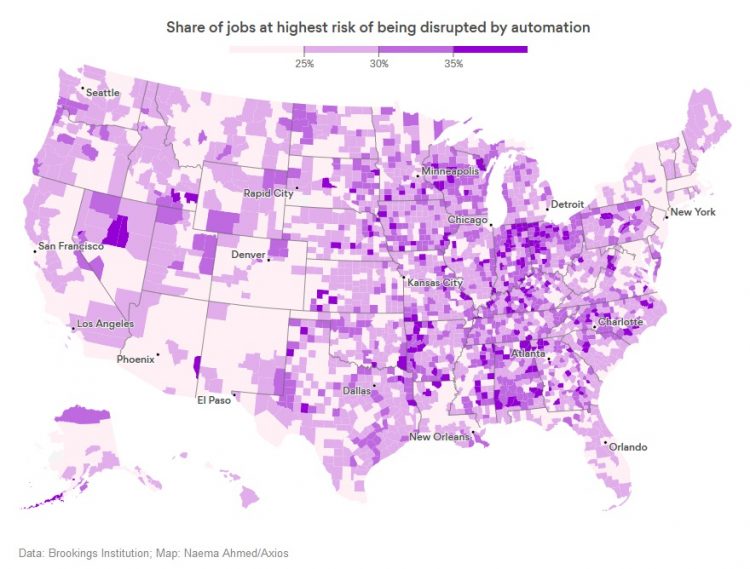The counties in the Midwest hit hardest by previous waves of job-market turbulence will again bear the brunt of the next round of automation-fueled disruptions.
As middle- and low-wage jobs in the American heartland disintegrate further, the national anger and polarization fueled by an urban–rural divide will only deepen.
“We often talk about automation in terms of which jobs will be lost. It’s just as important, if not more important, to think about which places will be hit,” said Roy Bahat, head of the venture fund Bloomberg Beta.
The last wave of technological disruption — the IT revolution of the 1980s — created new jobs, but the bulk of the job and wage gains were on the high and low ends of the labor market.
Scores of middle-wage, middle-skill jobs in manufacturing, largely in the middle of the country, were automated away or sent abroad.
Now, the new wave of automation and AI is projected to hit high- and low-paying jobs in addition to middle-income jobs, says Marina Gorbis, executive director of the Institute for the Future.
The next crop of vulnerable jobs — which include middle-wage occupations like trucking and administrative office work as well as lower-wage jobs like waiting tables and farming — are scattered all over the country, but the highest concentration is once again in the heartland, per a January report from the Brookings Institution.
By the numbers:
A quarter of all jobs across the U.S. have high chance of being wiped out by automation.
The five states with the highest share of at-risk jobs are:
- Indiana (29%)
- Kentucky (29%)
- South Dakota (28%)
- Arkansas (28%)
- Iowa (28%)
All states which went for Donald Trump in 2016.
Compare that to the bottom five:
- New York (20%)
- Maryland (20%)
- Massachusetts (21%)
- Connecticut (22%)
- New Mexico (22%)
All states which went for Hillary Clinton.
But the extent of the hit to middle America is even clearer when zooming in to the county level.
For example, in Jerauld County, South Dakota, 53% of jobs are hanging in the balance.
48% of jobs are vulnerable in Scott County, Miss.; 48% in Dakota County, Neb.; and 46% in Colfax County, Neb.
Automation is best suited for jobs that are repetitive and predictable — like factory work.
Now, in the AI age, machines may encroach even on lower-wage jobs that require uniquely human skills, like taking care of the elderly or waiting tables.To absorb the coming disruption, the government and corporations will have to take charge of reskilling and upskilling huge swaths of displaced workers.
“The big challenge we’re looking at in the next few years is not mass unemployment but mass redeployment,” said Michael Chui, McKinsey of the Global Institute.
The cost of reskilling the 1.4 million people who are displaced will be close to $34 billion, according to the World Economic Forum.

